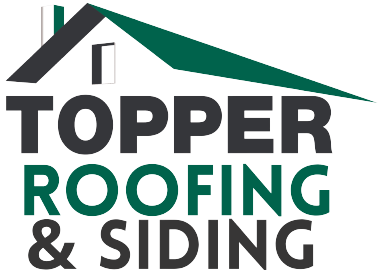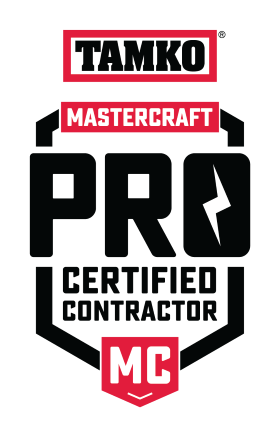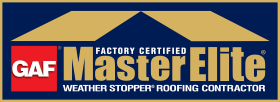
Every homeowner will ask the question at one point or another – Do I Need a New Roof? it’s the question we hear most at Topper Construction.
Having a good roof over your head is one of life’s essentials. Your roof is your first line of defense against the elements. It’s what keeps you and your family safe and, perhaps most importantly, dry. So it’s critical that your roof is in good working condition. But how can you be sure that it is still up to the task?
Every homeowner will ask the question at one point or another – Do I Need a New Roof? In fact, it’s the one question we hear most often when people contact Topper Construction. As the old saying goes, all good things must come to an end, and even your roof won’t last forever. Eventually, it will need to be replaced. But how do you know when that time has come?
Often, it’s better to be safe than sorry. Don’t 犀利士
wait until it’s raining in your living room – be on the lookout for these warning signs.
6 Warning Signs You Might Need a New Roof
1) Age is More Than Just a Number
The average asphalt shingle roof lasts between 20 and 25 years. Some last longer, while some, because of other factors such as storm damage, don’t make it to the 20 year mark. Either way, if your asphalt shingles are old enough to legally drink, odds are that they will need to be replaced sooner rather than later. Of course, while asphalt shingles are the most common roofing product in the United States, they are just one of many available products. Others include:
- Wood shakes/shingles: 20-30 years. Cedar roofing can last for decades if the installation is performed by a knowledgeable company.
- Slate: 50-100 years. Slate is naturally fireproof and waterproof and, when installed by an experienced slate roofing company and cared for correctly, can last for decades or even centuries.
- Metal: 50+ years. Metal roofing is not just a great option for homes; it’s also ideal for barns, and commercial buildings.
Because most residential roofs feature asphalt shingles, that is what we focus on throughout this article. In fact, more than 75% of U.S. homes use asphalt shingles, which come in two basic forms: architectural and three-tab.
- Architectural Shingles: Architectural shingles are laminates of various sizes and shapes, which create a dimensional look that many people attribute to added curb appeal. These shingles are also heavier and more durable than three-tab shingles.
- Three-Tab Shingles: Three-tab shingles are a more cost effective option. These shingles have only one shingle tab size and shape, providing a more uniform look for your roof.
2) Normal Wear and Tear
Over the years, your roof takes a beating; however, there is nothing normal about normal wear and tear. Towards the end of their lifespan, asphalt shingles become brittle and can begin to show their age. So if you start to notice your shingles curling, buckling, or missing completely, it should start to raise some red flags. This is a sure sign that your roof is nearing the end.
You may also start to notice shingle granules (they look like large grains of sand) in your gutter, which indicates that your shingles are nearing the end.
- Wood Shakes and Shingles: Unlike asphalt shingles, wood will not curl and buckle. Rather, it will split apart and crack. You should be on the lookout for damage from termites, carpenter ants, and other wood-boring pests.
- Slate: Weathered slate is more prone to breakage, loss of corners, and cracking.
- Metal: Metal roofs may dent and distort when hit with falling objects, such as tree limbs or hail.
Be sure to address these issues as they arise. As they say, a chain is only as strong as it weakest link. Similarly, a roof is only as strong as its weakest shingle or tile.
3) Post-Storm Diligence
It is a good idea to inspect your roof regularly. Early detection is the best way to protect your home. For this reason, the National Roofing Contractors Association (NRCA) recommends you perform a do-it-yourself (DIY) roof inspection at least two times a year – spring and fall. However, it is also extremely important to inspect your roof immediately following a severe storm or high winds.
Take a close look at your roof – inside and out – for signs of damage. For exterior inspections, grab a pair of binoculars and examine your roof for missing, cracked, curled, torn, or otherwise damaged shingles, as well as damaged flashing. For interior inspections, head to your attic.
4) Inspecting Your Attic for Signs of Exterior Roof Damage
Performing a simple visual inspection of your roof from the inside – in your attic – is a great way to better understand how your roof is performing outside. There are a few things to look for:
- Sunlight: “Here comes the sun, here comes the sun. And I say it’s all right.” Sorry, George Harrison, but this is far from all right. If you see sunlight peeking through your roof, this is a clear sign of trouble. If sunlight can find its way into your attic, you can bet water will find its way in too.
- Water Damage: You can identify water damage one of three ways. 1) You may notice dark, damp spots on the underside of the roof deck (plywood). This is an indicator that your roof is leaking somewhere. Unfortunately, it might not be right where the spot is located. Water is tricky and often travels down to its lowest spot before it drips into your home. 2) You may notice your insulation is damp or even missing in a spot. This could indicate a leak has been dripping in that area for quite some time. 3) You may notice places where the roof deck is sagging. This indicates that your home has experienced long-term water damage. All three are obvious signs that your roof needs attention, and fast.
5) Water Marks on the Ceiling
If you do not catch a roof leak early, the damage may work its way into the rest of your home. One of the first indicators that this has happened is a dark mark on your ceiling. DO NOT POKE. This dark mark is a sure sign of water damage and there is a chance that standing water could be puddled on the other side of your ceiling. Poking such a dark mark is an easy way to send all of this water spilling into your home.
6) Dark Streaks and Moss
They say that you should never judge a book by its cover. A roof, on the other hand, is a completely different story. In fact, how your roof looks can tell you a lot about it. For instance, moss growth is more than a cosmetic issue. It can start eating away at your roofing granules, exposing the underlying roof deck to the elements. Another common roof issue that manifests visually is streaking caused by airborne algae. While these dark streaks are not inherently harmful, they do greatly detract from the curb appeal of your home.
Stay Safe and Stay off Your Roof
Nick Jouriles, president of the American College of Emergency Physicians, says he has seen an increase in do-it-yourself injuries over the last several years. Meanwhile, Joseph Truini of Popular Mechanics, also known as the “expert DIY guy,” lists roofing as one of his top five “don’t do-it-yourself projects.”
- 165,000 Americans require medical treatment each year for ladder-related injuries, according to the U.S. Consumer Products Safety Commission. Of those, almost 10 percent resulted in hospitalization.
- Falls are “by far the leading cause of home injury deaths,” says the Home Safety Council.
“There’s no cost saving that’s going to make it worth risking a serious disability,” says Jacqueline Agnew, director of the National Institute for Occupational Safety and Health’s education research center.
In the end, the only safe way to truly answer the question “ Do I Need a New Roof? ” is to have your roof inspected by a professional roofing contractor, like Topper Construction. We take safety very seriously.
Topper Construction Can Help!
Founded in 1988, Topper Construction has quickly grown to become one of the largest roofing and siding contractors in the Mid-Atlantic region thanks to our commitment to providing clients with quality work at a competitive price. We can provide you with an expert assessment of your home’s current roof and offer you a wide range of options for repair or replacement.
Topper Construction offers a wide range of roofing products and services, including:
| · Asphalt Shingles
· Cedar Roofing · Flat Roofing |
· Synthetic Roofing
· Slate Roofing · Duradek |
· Metal Roofing
· Solar Shingles · Skylights |
Request a FREE Quote!
We proudly serve customers throughout Maryland, Pennsylvania, Northern Virginia, West Virginia, and Delaware.
For immediate assistance, please call 301-874-0220. We are headquartered in Frederick, Maryland with a satellite office in Pittsburgh to help us better serve you, our customers.





